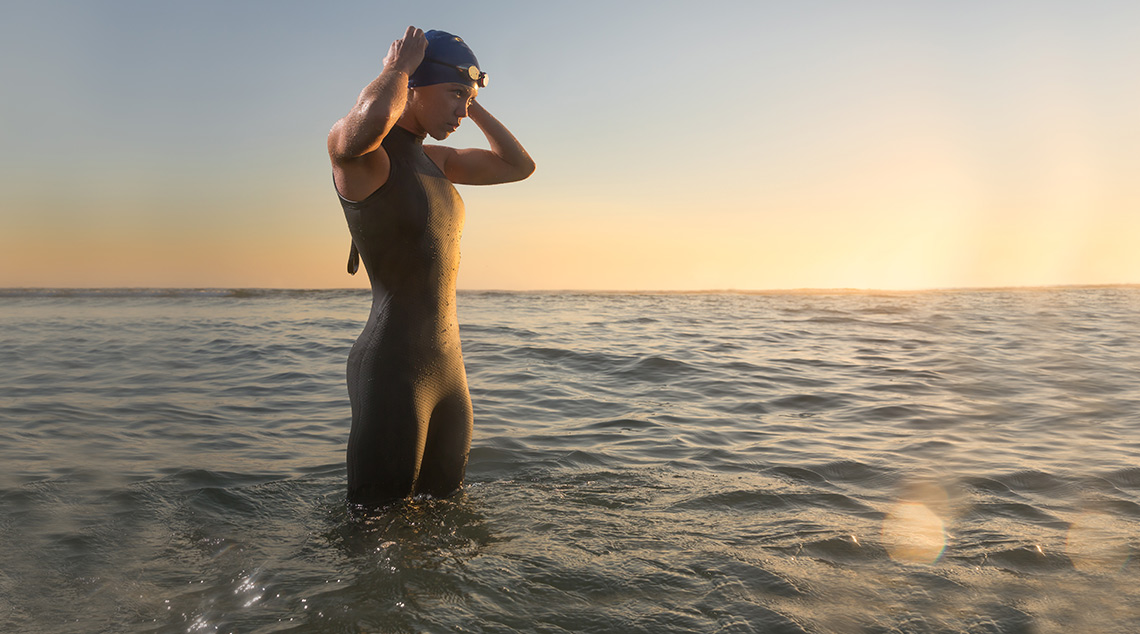Try a triathlon for triple the fun – and fitness
Looking for a fun new way to step up your fitness game this summer? A triathlon could be just the challenge you need.
Like your exercise outdoors, with plenty of endurance and a social buzz?
It might be time to attempt your first (or second or third) triathlon – and swim, cycle and run your way through the warmer months.
How long is a triathlon?
It depends on the event but according to AusTriathlon, a standard distance triathlon involves a 1.5km swim, 40km bike ride and 10km run (in that order).
Many first-timers opt for a shorter “sprint” distance, which is a swim of around 300-400m, a ride of 5-8km and a 1.5-2km run.
You don’t have to be an extreme athlete.
Davey Black Triathlon owner and coach Steve Davis says “it doesn’t matter your size, shape, injury history or how fit you are”.
“You go out there and you do a certain distance and then the next time you go out and try and beat that time, or you can challenge yourself and step up in a distance.”
Tips to make you a better triathlon swimmer
Generally, the swim leg – especially the open water nature of it – is the most foreign element for newer triathletes, Steve says.
So try to do at least some of your swim training in open water.
For safety, he recommends heading out with others and swimming parallel to the shore in the shallows while gaining confidence.
Want to feel more relaxed?
Count your strokes in your head.
Do you need a wetsuit for a triathlon?
Beckworth Racing founder Adam Beckworth says a wetsuit can provide extra warmth and buoyancy, but make sure you practise in it.
On the day, he recommends getting in the water or at least splashing your face to acclimatise to the temperature of the water.
Hate freestyle swimming?
Do any stroke you like – and stay to one side if you want to let the speedy swimmers zip past.
How often should you train for your triathlon?
Ideally, start your fitness preparation 12 weeks out by finding a basic training plan online or signing up to a triathlon club or coaching sessions.
For a shorter event, Adam recommends swimming for about an hour each week, riding for two hours a week and running for at least one hour a week.
But pace yourself, and let your body adapt before trying to go too quickly, he says.
Tips for smooth triathlon transitions
You will need to do two transitions in your triathlon: swim-to-bike and bike-to-run.
Practising your transitions will help greatly, Adam says.
As will arriving early on the day and getting familiar with the start and end points for each leg.
Adam says using elastic laces and popping some talcum powder in your shoes will make your shoes easier to slide on.
The bike-to-run transition is one of the most challenging aspects of a triathlon.
Steve suggests shifting into an easier gear for the last kilometre of the ride.
“Get the cadence up nice and high, get the blood flowing down to the smaller muscles, and then when you’re running off the bike, find your breathing rhythm,” he says.
And the best tip of all?
Just enjoy yourself – and that sweaty, well-earned satisfaction of crossing the finishing line.
Key triathlon equipment
- Bathers or a tri suit
- Wetsuit (optional)
- Goggles
- Bike (a road bike is fine, but any type will do) and helmet
- Plastic water bottle – not metal or glass
- Runners
- Towel
More on incorporating exercise into your life:
- How often do you really need to exercise to get results?
- Not a fan of yoga? Try these gentle exercise alternatives for mind-body benefits
- 5 easy tips to make exercise more fun
- Haven’t exercised in a while? Here’s where to start
Written by Larissa Ham.





